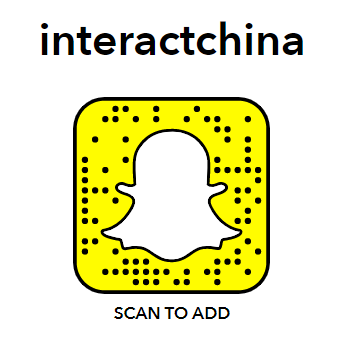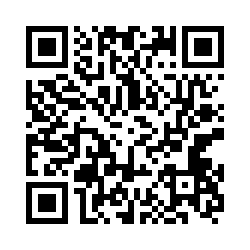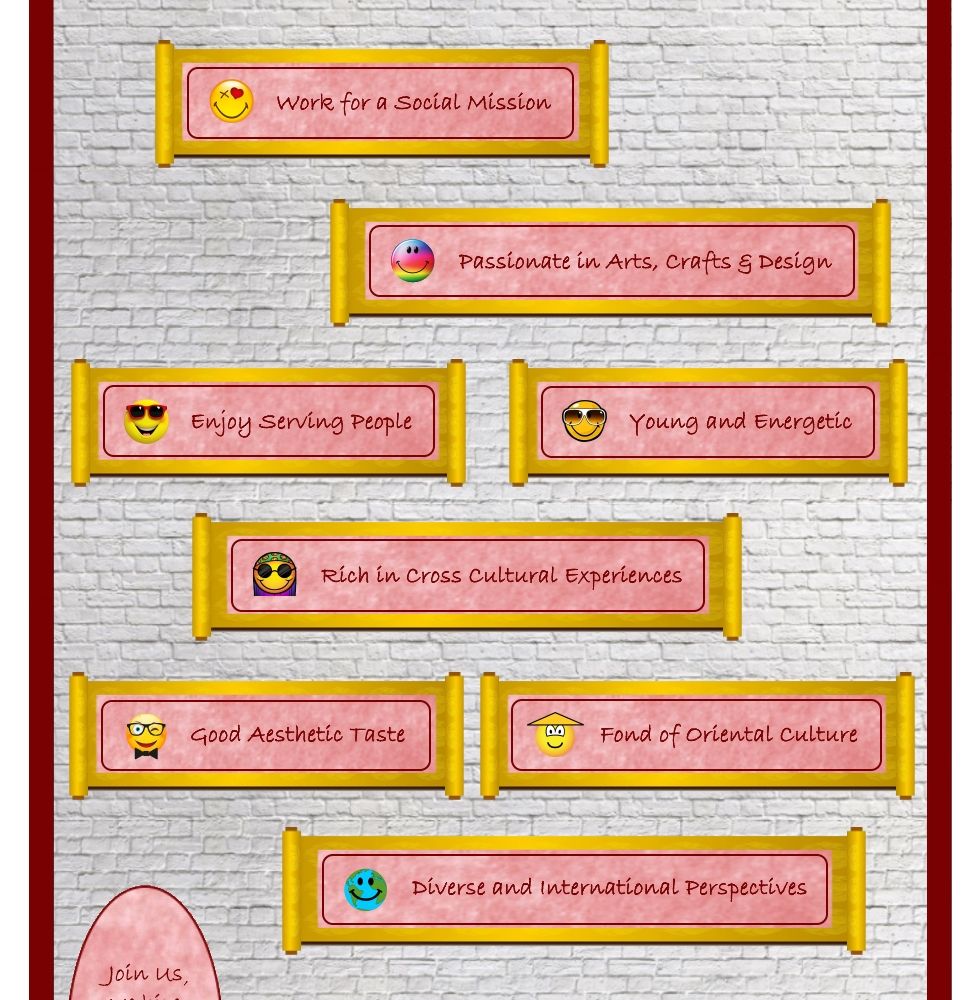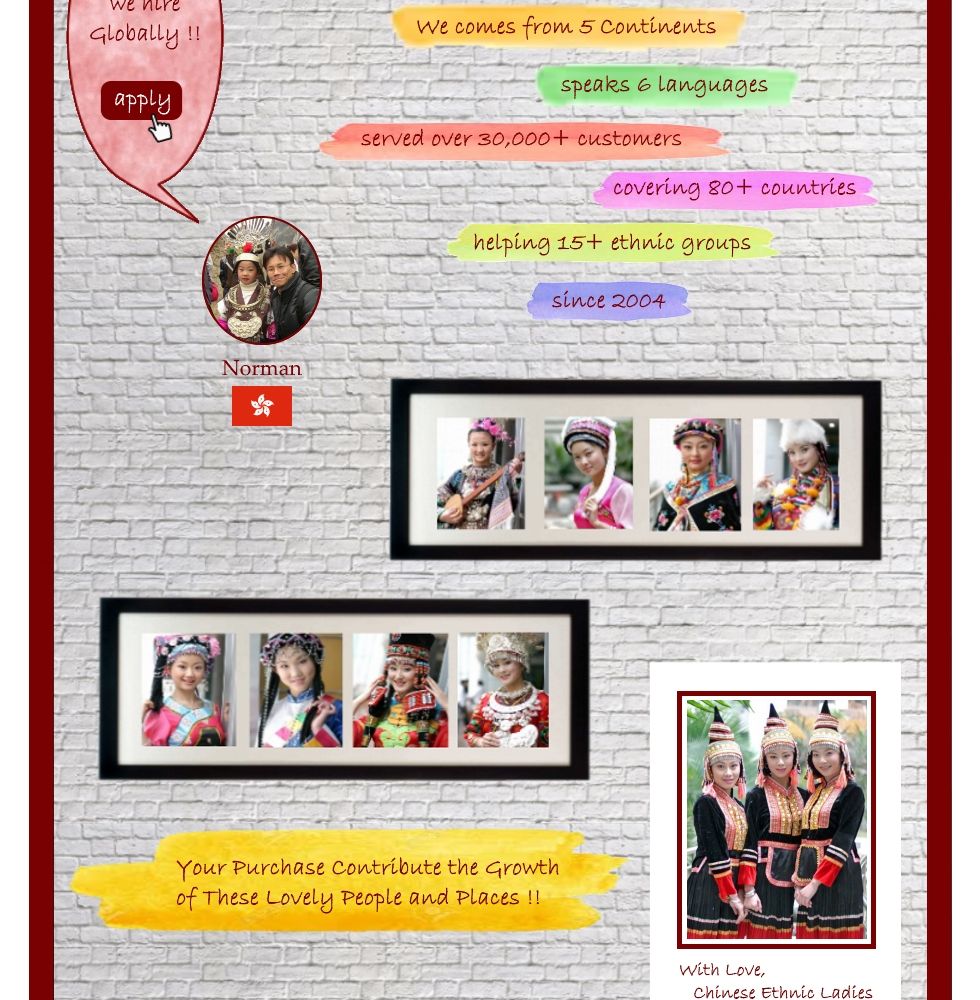Step by step guide to wear a Podaegi Mei Tai Baby Carrier
With many thanks to Michelle for writing this guide and David for being a model !!
"I just wanted to tell you how much my son and I enjoy the baby carrier we bought. It is wonderful - we use it every day, and it is truly a work of art as well as being incredibly practical! My son is 11 weeks old, and the carrier means I can get myself breakfast without waiting for him to fall asleep - with the added bonus that it usually sends him off to dreamland very quickly, so I get to shower as well :) We have also used it instead of a pram when out and about, and I love the fact that I can feed him anywhere in total privacy! Now he is getting big and strong enough to want to look around he smiles whenever he sees me putting it on, as it means a new adventure for him!"
~~ Michelle Whitehead of Australia ~~
1. Lay the carrier on a flat surface. Place the baby on the carrier so the top of the baby's head is roughly even with the top of the carrier. Fold the soft bottom panel up over the baby's feet.
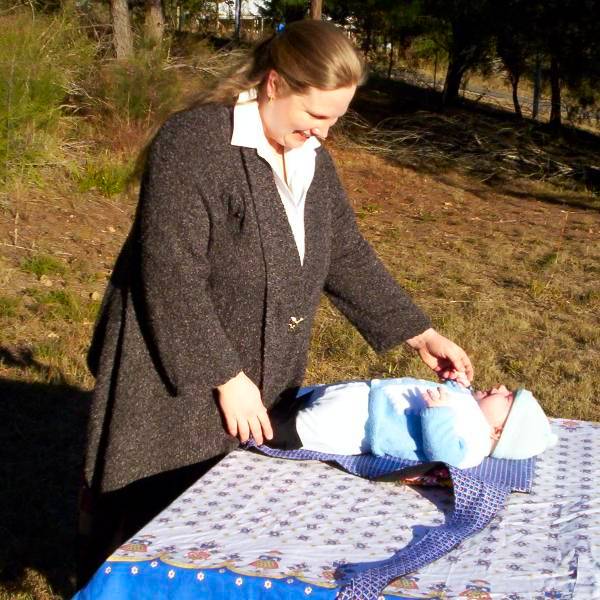
2. Put the straps over your shoulders and cross them behind your back, so that each hand is holding the opposite strap. 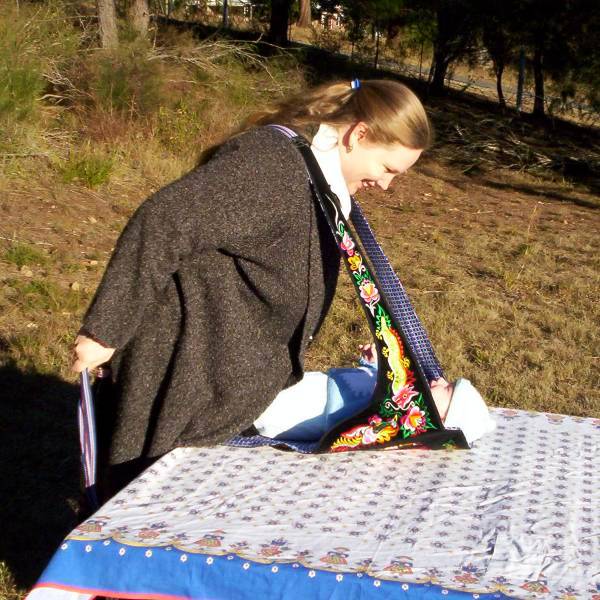
3. Lean forward towards the baby, pulling on the straps and taking up the slack.
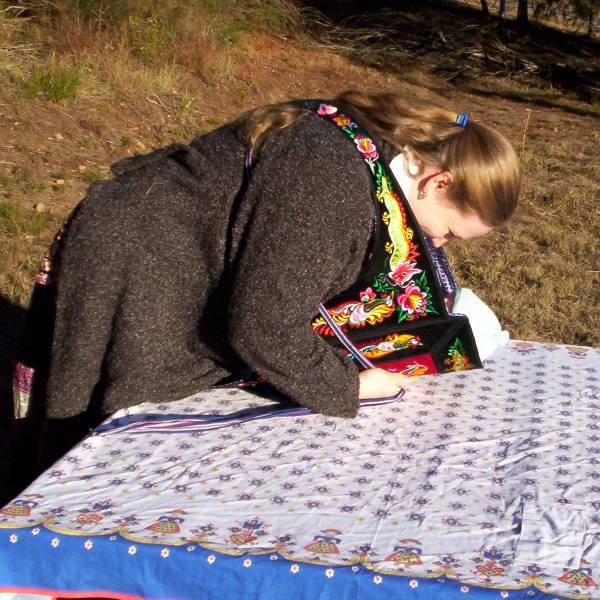
4. Pick up the baby and the carrier together and, while supporting the baby's bottom, continue pulling the straps tight. (Don't worry if the bottom panel becomes untucked at this stage.)
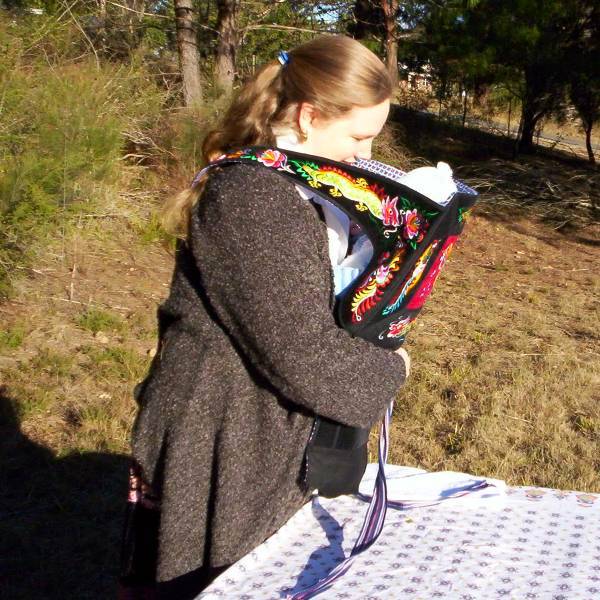
5. When the straps are comfortably snug around your shoulders, cross them in front of you, just under the baby's bottom. Check to make sure the baby's arms and hands are tucked inside the carrier and not twisted.
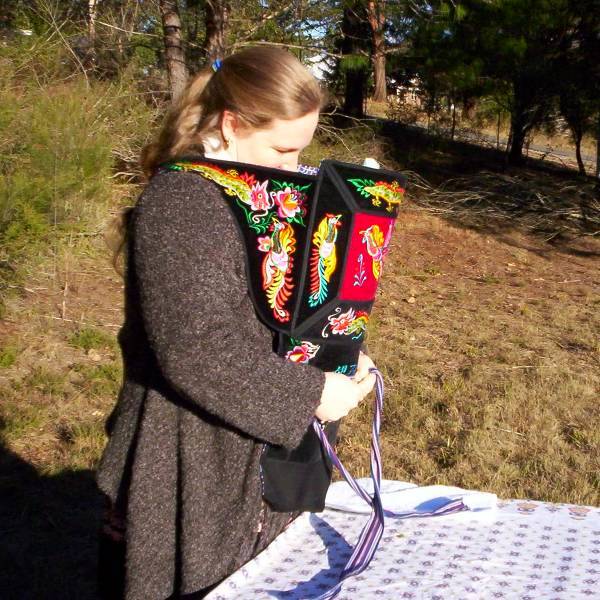
6. Keeping the tension on the straps to support the baby, wrap them around your waist and behind your back.
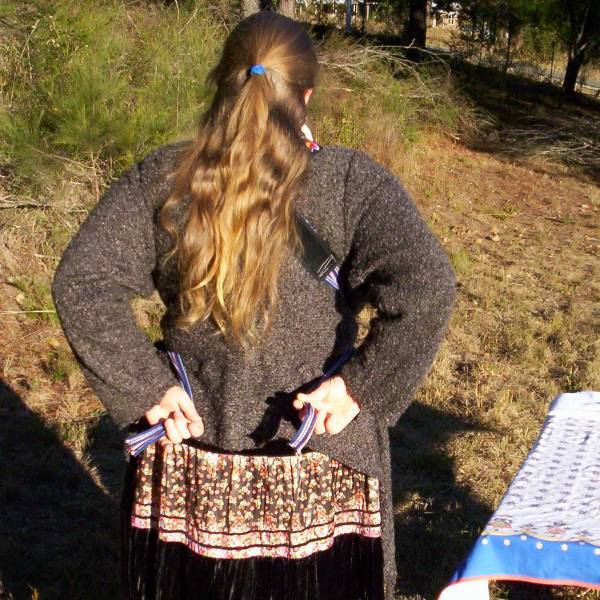
7. Tie the two straps together in a single knot behind your back
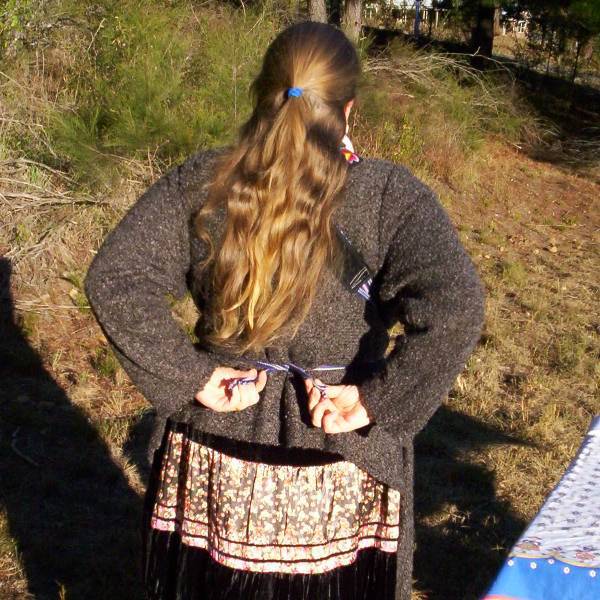
8. and tie again to make a double knot. (The knot should be secure enough so it won't come undone by itself, but not so tight that you can't undo it!)

9. Reach in through the sides of the carrier and lift the baby up to make sure he or she is placed comfortably. Support the baby's bottom with your hand and pull on the back of the carrier to settle the baby back into position. Check that the straps aren't too tight, and adjust them so that they support the baby's weight. (They should rest just under the baby's bottom, so as not to place pressure on the baby's back or knees.)
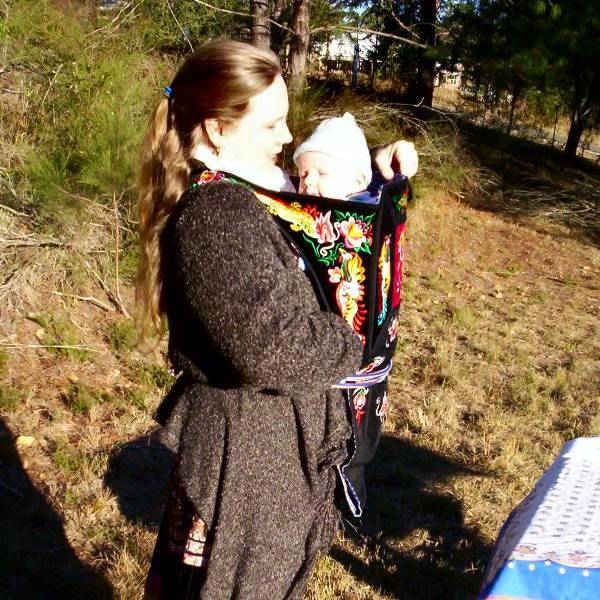
10. Check the position of the soft bottom panel. If it has come loose, tuck it back around baby's feet to form a pocket between you and the baby. Check that the baby's legs and feet are in a comfortable position. 
11. Once the baby is settled, hook your thumbs through the shoulder straps and pull them down over your shoulder blades. This distributes the baby's weight more evenly over your back.
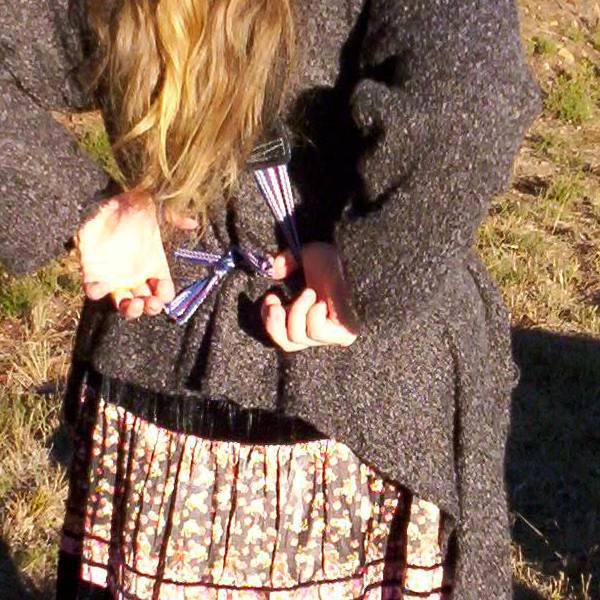
12. Finished! The baby is held upright, with straight legs, but without taking any weight on his or her feet. The baby's neck is supported as his or her head rests on the back of the carrier. (If you are walking fast, it helps to place one hand on the baby's head so it doesn't bounce with your footsteps.) The curved side panels sit snugly against your body, protecting the baby from the wind, and offering relative privacy if you need to feed the baby in public.
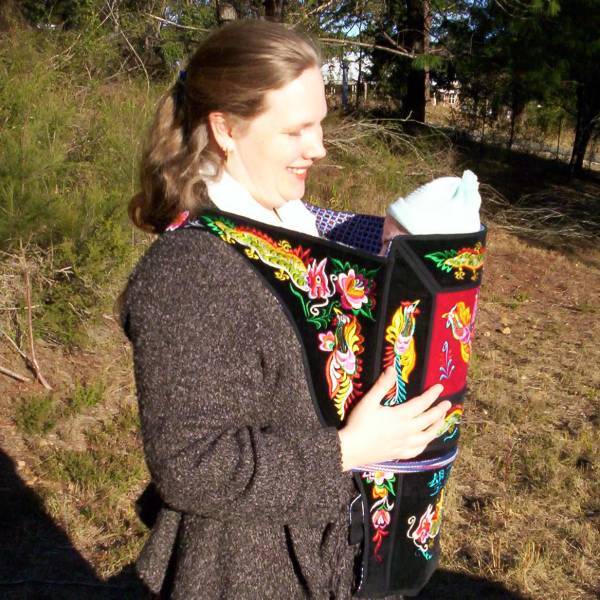
13. My son is now three months old, and he loves being able to peer over the edge of the carrier and watch what is going on. He feels very safe and secure there (though he can't quite understand why we want to take all these photos of him, rather than taking him for a walk!)
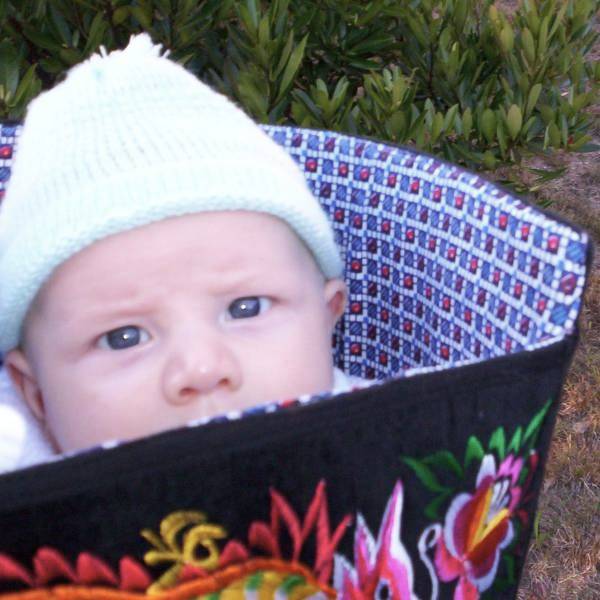
14. The carrier also works well to rock the baby off to dreamland. This photograph was not purposely staged - by the time I had walked back into the house, he was sound asleep! If you untie the carrier carefully and support the baby against your chest as you pull the carrier away (don't forget to untuck the bottom panel first) the baby will often stay sleeping peacefully long after you have stopped carrying him or her.
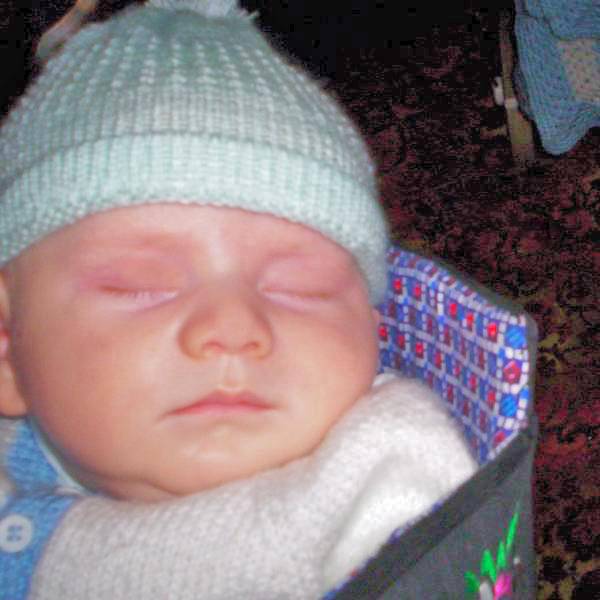
I hope you have found this guide useful, and that you get as much pleasure out of using your carrier as we do!
Michelle Whitehead, Australia






